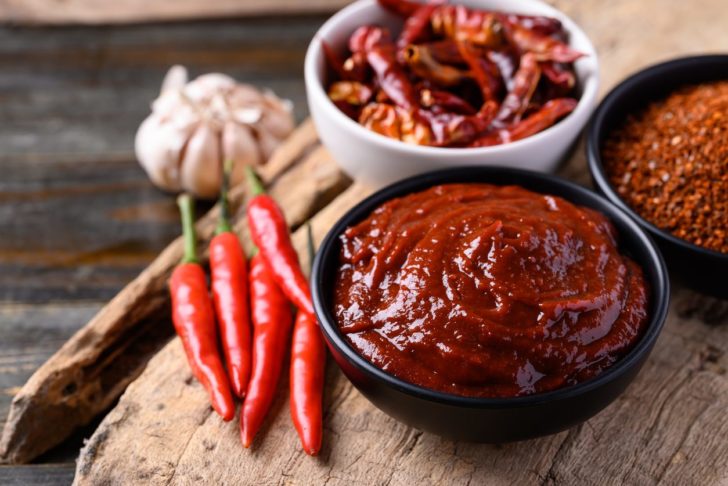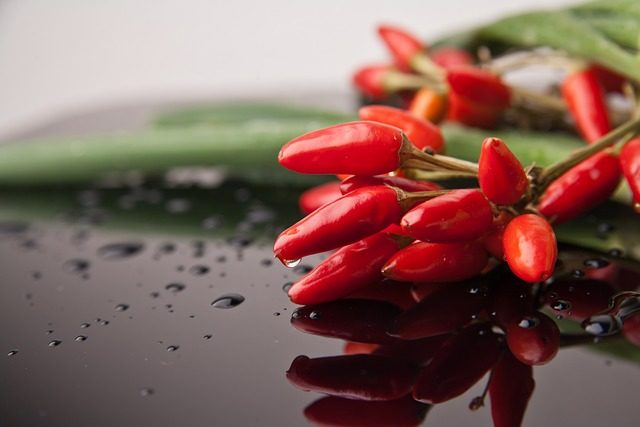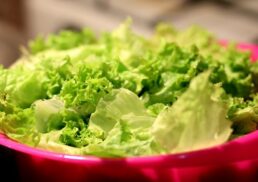Ready to spice up your culinary game with an addictively delicious and easy sauce? Look no further! We’re here to introduce you to the incredible world of gochujang sauce – a Korean staple that’s taking the food scene by storm. Bursting with a unique combination of sweet, spicy, and savory flavors, this versatile sauce can transform any dish into a taste sensation. Let’s embark on a flavorful adventure and discover the ultimate gochujang sauce recipe!
Table of Contents
Key Takeaways
Experience the centuries-old flavor of Gochujang sauce – sweet, spicy & savory!
Excitingly explore different variations and customize your own to make it perfect for you.
Enjoy all its amazing health benefits while storing and preserving it safely for maximum freshness!
The Magic of Gochujang: A Korean Staple

Gochujang, also known as Korean chili paste, is a fermented red chili paste that has been a prominent feature in Korean cuisine for centuries, bringing a spicy and savory kick to dishes and elevating their taste profiles. This amazing sauce is made from:
Red chili peppers
Sticky rice
Soybeans
Salt
Creating a complex flavor that’s hard to resist.
Whether used as a bibimbap sauce, a dipping sauce, or in a myriad of other Korean food dishes, gochujang sauce ingredients deliver a unique experience for your taste buds.
History and Significance
With a history dating back to the 16th or early 17th century, gochujang has become an integral part of Korean culture. This fermented condiment gained popularity quickly and has been used in a variety of traditional dishes ever since. Gochujang holds immense cultural importance in Korea, as it has been used for medicinal purposes and is considered a staple ingredient in many dishes. The process of fermenting gochujang in earthenware, called jangdok, has been a traditional practice for centuries, showcasing the importance of this flavorful paste in Korean cuisine.
Throughout the years, the use of gochujang has evolved, expanding beyond traditional dishes and becoming a versatile ingredient in various recipes. As a spicy paste made from red chili peppers, fermented soybeans, rice, and salt, gochujang plays a significant role in traditional Korean meals, adding a unique and addictive flavor to the cuisine.
Flavor Profile
Gochujang’s flavor profile is a delicious combination of sweet, spicy, and savory. The fiery kick comes from the red chili pepper flakes, while the subtle sweetness is derived from sugar or honey. Fermentation adds a mouthwatering umami flavor that makes this sauce incredibly delicious. The complexity of gochujang’s taste comes from its perfect blend of ingredients, which create a harmonious balance of flavors that’s hard to replicate.
The flavor of gochujang develops and changes over time through the fermentation process, usually taking six to 12 months. During fermentation, the starch in the glutinous rice turns into sugar, adding a characteristic sweetness to the sauce. This lengthy process results in the distinctive sweet and spicy flavor that has made gochujang a beloved ingredient in Korean cooking.
Health Benefits
Gochujang is not only a flavor powerhouse, but it also offers some amazing health benefits. It’s an incredible source of protein, fiber, and vitamins, which can be hugely beneficial to gut health and aid digestion. The fermentation process also creates probiotics, which help promote a healthy gut microbiome and improve digestion.
However, due to its sodium and sugar content, gochujang should be consumed in moderation. Despite these concerns, the sauce contains various essential vitamins, including vitamin C, vitamin A, and several B vitamins, as well as minerals like iron and calcium. So, while it’s important to enjoy gochujang responsibly, there’s no denying its nutritional advantages.
Gochujang Sauce Essentials

The key to the perfect gochujang sauce lies in the selection of appropriate ingredients. At the heart of the sauce is gochujang paste, which provides the essential spicy and savory flavors. To complement the paste, you’ll need ingredients like rice vinegar, sesame oil, and maple syrup.
These additional components enhance the sauce’s taste and turn it into a versatile and delicious addition to various dishes.
Gochujang Paste Selection
Choosing the right gochujang paste is fundamental to attaining the desired taste and spice level in your sauce. You can find gochujang paste in larger grocery stores with an aisle dedicated to ethnic foods or in a Korean grocery store. There are several brands available, each offering a unique flavor and intensity. It’s important to choose a paste that suits your palate and the dish you’re preparing.
If you’re unable to find gochujang paste or prefer a milder taste, you could try swapping it for another chili paste like Thai red curry paste or Sriracha. However, the unique flavor of gochujang will be missing, so keep in mind that the final sauce will have a different taste profile.
Complementary Ingredients
After selecting your gochujang paste, the next step is to assemble the supplementary ingredients that will boost the flavor of your sauce. Here are some options to consider:
Rice vinegar: adds a tangy touch
Sesame oil: provides a rich, nutty aroma
Sweeteners like maple syrup or honey: can balance the spiciness and add a touch of sweetness to the sauce.
For a vegan version of the sauce, you can substitute honey with maple syrup or agave nectar. If soy sauce is used, consider opting for coconut aminos as a vegan alternative. By experimenting with different ingredients, you can customize your gochujang sauce to suit your preferences and create a unique sauce that you’ll love.
Step-by-Step Gochujang Sauce Creation
With your essential ingredients assembled, you are set to prepare your delicious gochujang sauce. Follow our easy gochujang sauce recipe with a step-by-step guide to mixing, blending, and adjusting the taste of your sauce to perfection.
Once you’ve mastered the art of gochujang sauce creation, you’ll be ready to elevate your dishes to new heights of flavor!
Mixing and Blending
The first step in creating your gochujang sauce is to mix and blend the ingredients. Here’s how:
In a small bowl, whisk all ingredients together.
Stir until the texture is smooth.
You can also use a blender or food processor to achieve a smoother consistency if desired.
If you encounter lumps while mixing, try adding the ingredients gradually and mixing well after each addition. This will help to ensure a smooth and consistent sauce. Be patient and mix the ingredients until there are no big lumps and the sauce has a smooth texture.
Taste Adjustments
After mixing your sauce, the next step is to fine-tune the flavor according to your liking. Start by adding a small amount of sweetener, such as honey or maple syrup, and taste as you go until you achieve the desired level of sweetness. If you prefer a tangier sauce, you can incorporate vinegar or citrus juice, such as lemon or lime, to add a tangy flavor.
To increase the salt content and enhance the savory taste, try adding soy sauce or fish sauce. For a spicier sauce, add more gochugaru (Korean red pepper flakes) or chili powder. Don’t be afraid to experiment with these ingredients in small increments until you find the perfect balance of flavors for your gochujang sauce.
Serving Suggestions
Having prepared your gochujang sauce, you can now relish it with your favorite dishes. Spoon the sauce onto bibimbap bowls, use it as a dressing for veggie rice bowls, or drizzle it over grilled meats for a spicy kick. The possibilities are endless!
For a different take on gochujang sauce, try using it as a:
Marinade for meats and vegetables
Dressing for salads
Sauce for stir-fries
Dip for dumplings or spring rolls
Mix it with vinegar, sugar, and sesame oil to create a flavorful sauce that pairs perfectly with a variety of dishes. Whether you’re a fan of Korean cuisine or just looking to spice up your meals, gochujang sauce is a delicious and versatile addition to your culinary repertoire.
Versatile Uses for Gochujang Sauce
The use of gochujang sauce extends beyond traditional Korean dishes. Its versatility makes it a fantastic addition to marinades, dressings, stir-fries, rice bowls, and even snacks.
Experiment with different recipes and discover how this incredible sauce can elevate the flavor of your favorite dishes.
Marinades and Dressings
Gochujang sauce makes an excellent marinade or dressing for meats and vegetables. Here are some ways you can use gochujang sauce:
Combine gochujang sauce with soy sauce, fresh minced garlic, and minced onion or chives to create an irresistibly flavorful marinade for your favorite meats.
Mix gochujang sauce with soy sauce and sake for grilled pork belly kebabs.
Create a spicy, smoky, and umami-rich marinade for Korean beef.
For a salad dressing with a twist, whisk together the following ingredients:
Gochujang
Soy sauce
Apple cider vinegar (replacing rice wine vinegar)
Sesame oil
Brown sugar
This versatile dressing, with a hint of lime juice, will add a delicious and spicy flavor to your salads, making them anything but ordinary.
Stir Fries and Rice Bowls
Incorporating gochujang sauce into various dishes can add a burst of flavor. Here are some ways to use gochujang sauce:
Mix it with a sauce for tteokbokki
Use it in barbecue sauces and ketchups
Incorporate it into stir-fried anchovy banchan
Pair it with crispy skillet rice
The easy gochujang sauce, which also makes a delicious spicy dipping sauce, can elevate these dishes with its spicy and savory flavors.
For a rice bowl with a kick, you can create a delicious stir fry meal by following these steps:
Spoon gochujang sauce over rice.
Top it with your favorite ingredients like sliced beef, scallions, and radishes.
The piquant sauce adds depth and excitement to any rice bowl, making it a meal to remember.
Snacks and Appetizers
Gochujang sauce isn’t just for main dishes; it can also enhance the flavor of snacks and appetizers. Here are some ways to use it:
Use it as a dipping sauce for chips and fries
Use it as a dressing for grilled meats, sandwiches, and salads
Pair it with Korean-style tofu
Pair it with grilled Korean bulgogi
Use it as a sauce for a kimchi-brined fried chicken sandwich
Pair it with gochujang shrimp
Gochujang sauce pairs delightfully with a variety of appetizers.
For a unique twist on dessert, add gochujang sauce to recipes like gochujang caramel sugar cookies, gochujang salted caramel frosting, and gochujang Texas sheet cake. The spicy and sweet flavors of the sauce create an unforgettable taste sensation that’s sure to impress.
Gochujang Sauce Variations
You can tailor gochujang sauce to match your dietary needs and flavor preferences. Whether you’re looking for a vegan, gluten-free, or milder option, there’s a variation of gochujang sauce that’s perfect for you. Explore different ingredients and combinations to create a sauce that’s uniquely yours.
Vegan Gochujang Sauce
For a vegan gochujang sauce, use the following ingredients:
Miso
Maple syrup
Tahini
Rice vinegar
Water
Combine these ingredients together for consistency. Vegan alternatives to honey, such as maple syrup or agave nectar, can be used to provide the desired sweetness.
Red miso or chickpea miso works great for vegan gochujang sauce, providing a rich and savory taste. Experiment with different amounts of miso and maple syrup to find the perfect balance of flavors for your vegan gochujang sauce.
Gluten-Free Gochujang Sauce
To make a gluten-free gochujang sauce, follow these steps:
Look for gluten-free labeled brands like Chung Jung One, as most gochujang sauces are not gluten-free.
Combine the gluten-free gochujang paste with other ingredients, such as water, Korean chili flakes, and brown sugar or honey.
Ensure that all the ingredients are gluten-free by checking the labels.
The taste and texture of gluten-free gochujang sauce may differ slightly from the regular version, but it still offers the same spicy and savory flavors that make this sauce so popular. Enjoy your gluten-free gochujang sauce with a range of dishes, knowing that it’s safe for those with gluten sensitivities.
Milder Gochujang Sauce
If you prefer a milder gochujang sauce, try:
Adding sweet ingredients like sugar or honey to balance out the spiciness
Diluting the gochujang paste with water or vinegar to reduce the heat
Adjusting the spiciness by adding more or less gochugaru (Korean red pepper flakes) or chili powder to suit your taste.
By experimenting with different ingredients and quantities, you can create a milder gochujang sauce that still packs a flavorful punch. Enjoy the unique taste of gochujang without the intense heat by customizing the sauce to your liking.
Storing and Preserving Gochujang Sauce
Proper storage and preservation are key to maintaining the freshness and flavor of your gochujang sauce. By following proper refrigeration and freezing tips, you can extend the shelf life of your sauce and enjoy it for weeks or even months to come.
Refrigeration Tips
Store your gochujang sauce in an airtight container. Refrigerating it will help maintain its freshness. The ideal temperature for storing gochujang sauce in the refrigerator is between 35°F (1.7°C) and 40°F (4.4°C). Storing the sauce at this temperature helps to preserve its quality and prevent it from drying out or becoming watery.
To ensure that your gochujang sauce remains fresh and flavorful, follow these tips:
Use an airtight container to store the sauce.
Store the sauce away from strong-smelling foods.
Use a glass container instead of plastic to prevent staining.
Stir the sauce before use to maintain its smooth texture.
Freezing and Thawing
For extended storage, gochujang sauce can be preserved in the freezer for up to three months. Use an airtight container or jar to store the sauce in the freezer, placing a layer of plastic wrap on top of the sauce before sealing the container to prevent freezer burn.
When you’re ready to enjoy your frozen gochujang sauce, thaw it slowly in the refrigerator or place the container in a large bowl in the sink and run cold water over it until thawed. This ensures that the sauce stays at a safe temperature and maintains its quality during the thawing process.
Summary
Gochujang sauce is an incredible addition to any kitchen, offering a unique combination of sweet, spicy, and savory flavors that can elevate a variety of dishes. Whether you’re a fan of traditional Korean cuisine or simply looking to add some excitement to your meals, this versatile sauce is a must-try. Experiment with different ingredients and variations to create the perfect gochujang sauce for your taste buds. Happy cooking!
Frequently Asked Questions
What is gochujang sauce made of?
Gochujang is a sweet and spicy Korean condiment made with red chili pepper flakes, glutinous rice, fermented soybeans and salt – the perfect addition to any meal!
What does gochujang taste like?
Gochujang is like the love child of sriracha and miso – spicy, pungent and sweet – with a thick and sticky texture. The paste has earthy notes from Korean chili peppers that can range in spiciness from medium to very hot.
Is gochujang hotter than sriracha?
Gochujang is less spicy than sriracha, making it less hot and allowing for a sweeter flavor profile. Therefore, sriracha is hotter than gochujang.
What is the closest sauce to gochujang?
For an exciting flavor similar to gochujang, try substituting sambal oelek, gochugaru, harissa, sriracha or even chili-garlic sauce!
How long does homemade gochujang sauce last in the refrigerator?
Enjoy your homemade gochujang sauce for up to 2-3 weeks in the fridge!









